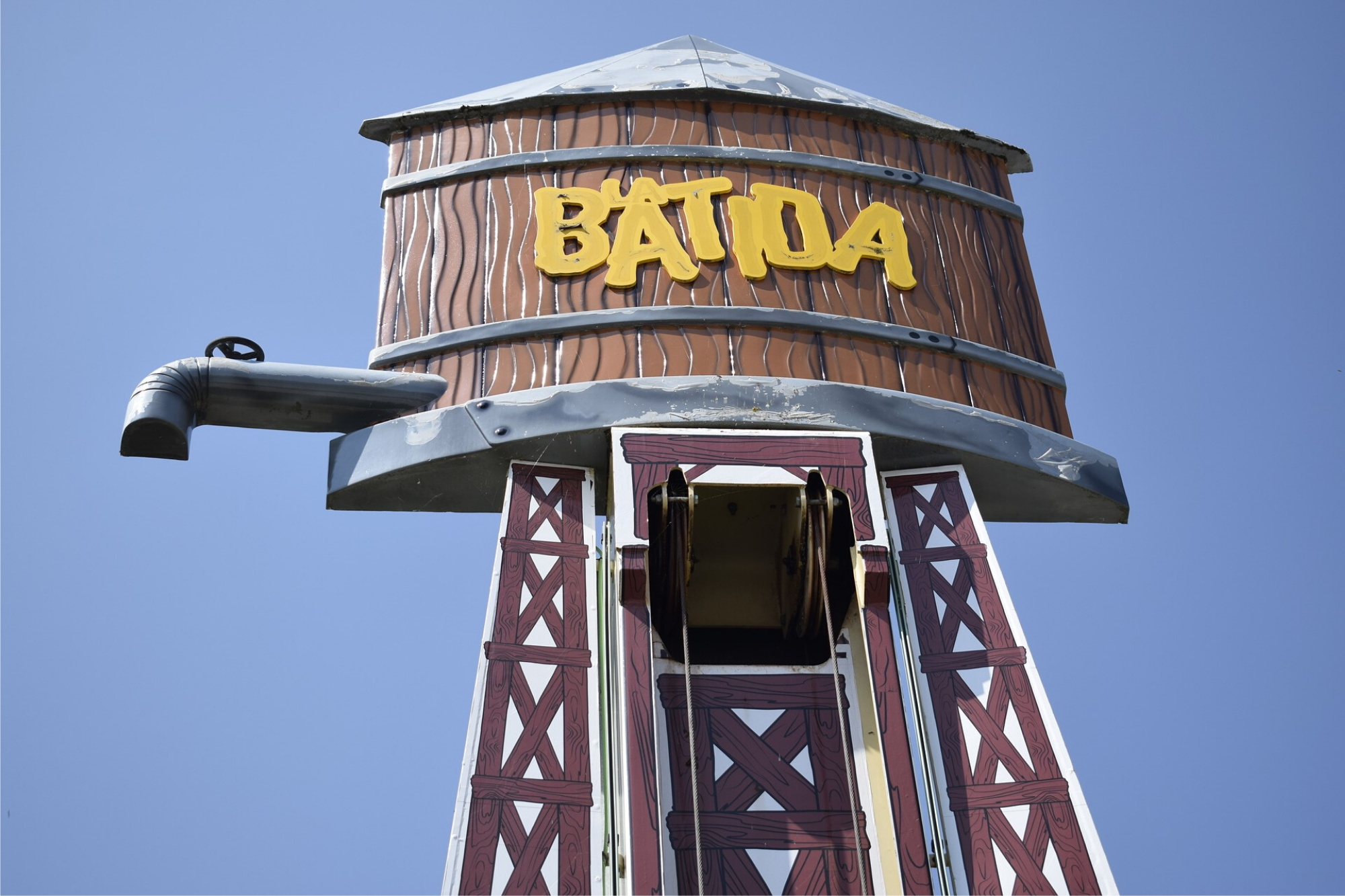How to make non-illuminated signs pop. When you are making a sign for your business, you want something that is going to attract people. Generating interest and driving people to the front door is a sign’s main purpose. But what happens when the sign can’t be seen from afar or is not illuminated? Rather than losing out on valuable opportunities, you can incorporate some design elements to make even an unlit sign bright, bold, and attention-grabbing. Enter, non-illuminated signs.
Here are ways to make a non-illuminated sign pop no matter the time of day: how to make non-illuminated signs pop.
What Is Non-Illuminated Signage?
Many businesses will select non-illuminated signs since this option is affordable and has plenty of design options on how to make nonilluminated signs pop to give you exactly what you are looking for. Non-illuminated signs come in dozens of shapes, sizes, and colors. The only thing it doesn’t have is an internal light source. That said, you can brighten up a non-illuminated sign by using an external light source, such as a spotlight.
Some examples of non-illuminated signage include:
- Unlit Logos and Letter Sets – Dimensional or flat-cut letters, sometimes called channel letter signs, can be non-illuminated. These signs are often made of acrylic, PVC, HDU foam, stainless steel, or aluminum (or a mix), and can be installed both indoors and outdoors. They have multiple applications, so you can use your creativity freely.
- Awnings – Typically, awnings are an architectural feature that is mounted around the edges of a building’s roof. An awning is made of metal frames and vinyl or canvas sheets to shield people from rain and sun. It can be used for advertising purposes as well.
- Wall Signs – Often crafted from pan-formed or flat aluminum panels, wall signs can become extremely appealing when paired with external light sources and other dimensional letters. Think pairing a logo with lettering.
- Way-Finding or Navigation Signage – Signs that aid customers with finding their way around a parking lot, complex, or building.
- Routed HDU Signage – Commonly referred to as sign foam, HDU is a very popular type of non-illuminated signage that can be shaped in any number of ways and given various textures. It is an excellent choice for both freestanding and wall-mounted signage.
Where Are Non-Illuminated Signs Found or Used?
Since non-illuminated signs are known for being versatile and cost-effective, you will find them used in dozens of ways. The most popular places you will see non-illuminated signage includes:
- Interior and exterior walls
- Logos displayed on business walls, both inside and outside the business
- As navigational signage around parking lots, expansive complexes, and inside multi-story department stores or shopping malls
- Mounted on fencing or other architectural features, like awning
- Places where local regulations do not permit illuminated signage, such as businesses in residential areas
- Buildings that do not have proper wiring to mount an illuminated sign
- As freestanding signs to advertise a pop-up event
Really, there is no limit to what you can do with non-illuminated signage. Making effective signage, however, comes down to a few key practices that will be discussed in the following section.
Tips For Making Non-Illuminated Signage More Visible
Choosing signage is like choosing the name of your brand or the address of your business. You need to think about certain elements that will influence the overall effectiveness, such as size, materials, and location. While non-illuminated signs do not have internal lights to brighten them up, it doesn’t mean they should be invisible.
Visibility is key to success, no matter your industry. A highly visible sign can increase your traffic by two or three-folds! If you want to make your non-illuminated pop day and night, consider the following design tips:
Make An Impact
There are several design principles that apply to both illuminated and non-illuminated signs that cannot be overlooked. If want to make an eye-catching sign that gets a lot of bang for the buck, you need to use said principles correctly.
One thing professionals will warn against is the use of overly complicated fonts. We can understand wanting to be unique, but you also need to think in terms of readability, especially if you want your sign to pop from far away. This means you should stay away from overly loopy, curvy fonts or fonts with letters scrunched together.
Choose fonts that do not run together. If you have serif fonts, make sure there is enough space between the letters. Sans serif fonts can be closer together.
Secondly, choose large font sizes. The bigger the sign is, the easier it is going to be to read. Few people have 20/20 vision. Make it easier for everyone to see your sign from afar. Ideally, your letters are going to be big enough to be seen about 30 feet away. Keep in mind that 10 inches is visible about 100 feet away, so the letters on your sign should be around 3-4 inches tall to be seen 30 feet away.
Visibility also increases when the message is concise. Imagine dozens of words smashed together on a sign. Even if the letters are the appropriate size, you need to compete with cars racing by. Short but informative messages work best. Passerby should be able to read your messages in two seconds, at most.
Location Is Pivotal
An underestimated factor in making non-illuminated signage pop is where you put it. Signs that are out of sight or even partially hidden are going to be much less attention-grabbing than those that get up close and personal.
You want your sign somewhere that is noticeable and guide people to your business. Scan the area around your business to consider the most advantageous points. You want your signs visible from multiple angles and multiple heights.
Make It Multi-Dimensional
Think about how intriguing 3D images are compared to 2D ones. Because the human eye is attracted to things with depth and levels, a 3D sign can be just as effective as one with illumination. You can create dimensional signage with a number of materials, including metals (brass, aluminum, stainless steel), PVC and high-density (HDU) plastics, metal laminates, and acrylic. Raised lettering or logos are often placed on a mount in a contrasting color to help the letters pop even more.
Non-illuminated dimensional signs can be crafted in a number of ways, but more popular developments in design include the following:
- Blade signs – these stand out from vertical surfaces, such as walls, storefronts, and pillars. You often find blade signs in urban zones, since they are excellent for advertising on crowded streets.
- Dimensional channel letters and logos – common in strip malls and above store entrances.
- Panel and post signage – usually found as navigation in parks, cities, department stores, or anywhere pedestrian traffic may need further assistance with finding their way.
Think In Contrasting Colors
You will notice that the brightest non-illuminated signs make incredible use of color. When contrasting colors are paired with crisp, clean fonts, you get a sign that is eye-catching even on the darkest days. Some of the best contrasting color combinations include white on black, black on white, or yellow on blue. Those combinations stand out at a distance and can be seen during the night as well.
Low-contrast colors, such as white on powder blue or other pastels, or gold on white, or pink on purple are much less powerful. In fact, these colors will blend together at a distance and become unreadable.
Choose contrasting color combinations that accent your brand image, if possible. That will help create a better first impression and make for aesthetically appealing signage.
Consider Dual Color Film
Do you want a sign that is visible both day and night but doesn’t use electricity to do it? It’s possible with dual-color vinyl film, a type of graphic film that is used to create a visual daytime or nighttime effect, depending on the color and brightness. The film is available in white, black, or can be customized to fit your needs.
How does dual-color film work? Take, for example, a white acrylic channel letter. When you overlay that channel letter with colored film, it will change the color. The dual color film is made with a special gird that exposes the background, similar to pointillism in art or pixel effects in graphic design.
This means that you could potentially overlay a white sign with black so it shows up black during the day and as a bright white during the night, allowing for maximized visibility. You can pair this with an external light source to make your signage all the more noticeable.
Making Non-Illuminated Signs Pop
In the end, there are many ways to create beautiful signage that grabs people’s attention and brings them to your store. By taking into consideration the overall design of your sign and the materials used, you can come up with a sign with details that pop day and night.
If you are having trouble coming up with ideas for non-illuminated signage, why not hire a professional designer? We hope this has answered the question of how to make non-illuminated signs pop. Get in touch by filling out the contact form to learn more about our design process or receive a quote on your idea. We look forward to hearing from you!



